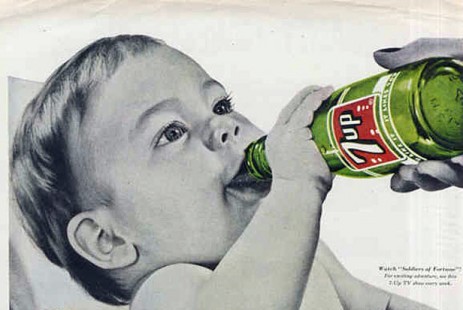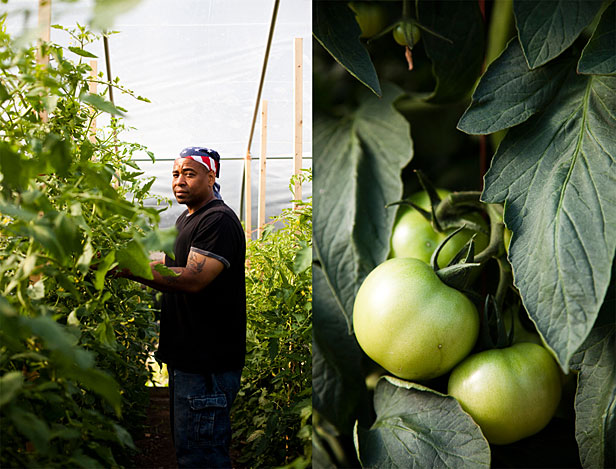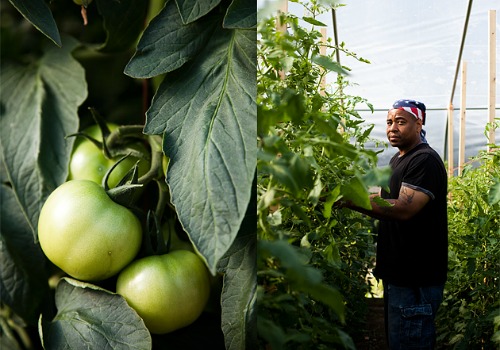January 2011 update: Many of the photos have been removed from this series so they can be published in a Breaking Through Concrete book, forthcoming this year from UC Press.
The real estate market dealt Melvin Price a double whammy. The 45-year-old builder and carpenter had been making a living in Chicago for years before he bought a house in the New City neighborhood of Chicago. It had had a fire, so he got it for $4,000, put in about $15,000 worth of repairs, and hoped to sell or rent it. An appraiser quoted the new value at $145,000. He couldn’t believe it, not in that neighborhood, but he was convinced enough to reject an offer of $85,000 for the house.
Then he turned his sights to Camden, N.J., where he’d visited and seen the glut of dirt-cheap homes that could easily be fixed up. He refinanced his New City property and bought two adjoining Camden homes for $20,000. He intended to rehab them for a quick turnaround with his buddy who’d just returned from the Army. But when Melvin showed up to Camden a month or so after the online purchase, the houses had been demolished by the city and he was left with the $30,000 demo fee.
It gets worse. Spiking interest rates on the shoddy mortgage he’d signed for the house back in New City (up to $1,700 a month) forced Melvin into foreclosure. One too many hard knocks, and Melvin was back in Chicago where the carpentry work had dried up and he had a dumpster of debt.
We meet Melvin as he gently cuts rainbow chard in an open-sided greenhouse. He and a dozen other interns work at Growing Home‘s Wood Street farm, in the West Englewood neighborhood of south Chicago. Ten years ago, Melvin used to rebuild houses here, and he remembers having to hire men to watch his house projects at night so vagrants wouldn’t steal the new windows or doors or plumbing he had installed.
He heard about Growing Home on the Internet, and he couldn’t believe there was a farm in this neighborhood. Growing Home offers a paid internship. So Melvin and 19 other interns began this growing season together in April. (Five have since moved into other jobs.) The men and women come from diverse backgrounds — some are directed here by mental health workers, social workers, or their parole officers (70 percent of this year’s class).
‘Our program has seen a 5 percent recidivism rate. It shows that when people are given a chance to work and change their lives, they will do everything they can to stay out of prison.’
Growing Home offers jobs, but it’s also a training program. The interns work three hours in the greenhouses each morning, Tuesday to Friday. After lunch they participate in classroom workshops on job-training skills. The results are layered. For one, the neighborhood benefits from the adaptive reuse of an abandoned lot into a beautiful, productive farm that can operate year-round thanks to the greenhouses. Second, the interns learn gardening and job skills, receive direction into full-time work, and get to eat healthy food. And Chicago gets another source of fresh produce: the vegetables are sold at the Green City market in Lincoln Park and at the Englewood market, offering a new food option in Englewood, a community of 70,000 with only one major grocery store.
Harry Rhodes helped start Growing Home in 2002. He’s seen it ascend from an idea into a successful project. Growing Home recently won a Harry Chapin Self-Reliance Award from WhyHunger. But the numbers tell the story.
“Over 150 people have gone through the program,” says Harry. “Sixty-five percent move into employment or educational training, and 90 percent find stable housing. The recidivism rate in Illinois is over 50 percent [within three years of release]. Our program has seen a 5 percent recidivism rate. It shows that when people are given a chance to work and change their lives, they will do everything they can to stay out of prison.”
We meet another intern — William Harris, 40 — at the Green City market on Saturday morning. It’s bustling with people, and the market stands are piled high with carrots, beets, chard, arugula, truckloads of tomatoes, and cheeses, breads, jams, and meats from farmers based on the outskirts of Chicago and deep in farm country. William is one of two interns working Growing Home’s market today. The staff rotates each Saturday. William’s parole officer directed him to Growing Home, and he didn’t know what to think. He’d spent seven years in prison and didn’t have a clue about gardening.
“I didn’t come into this program with the idea of liking gardening, but I really do now,” he says. “I’m in dental assistant school beginning in the fall, but I plan to own a small business on the side of that career. I’ll do landscaping and make gardens in people’s backyards.”
Melvin has ideas, too. He’s talked about starting a catfish farm to sell in Englewood and elsewhere. He thinks they’d go like hotcakes here. He also wants to get back into the business he knows — home building and carpentry. “Now I’m just trying to save enough money to get a house here,” he says. “They’re selling for $7,000. I want to get something and sit on it for five to seven years. Fix it and rent it. This housing market will come back.”
In the meantime, he likes what he’s doing. “I wish there were more jobs like this (farm) in the city. It’s relaxing — you gotta be dedicated to this,” he says. “I’m not in it for the money, but the people out here are so at ease, they love what they’re doing.”
On this video, intern Latoya Wiseman talks about how working the land affects her spirit:




